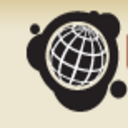27C3 - Version 1.6.3
27th Chaos Communication Congress
We come in peace
| Speakers | |
|---|---|
|
|
Bicyclemark |
| Schedule | |
|---|---|
| Day | Day 2 - 2010-12-28 |
| Room | Saal 1 |
| Start time | 21:45 |
| Duration | 01:00 |
| Info | |
| ID | 4057 |
| Event type | Lecture |
| Track | Society |
| Language used for presentation | English |
| Feedback | |
|---|---|
|
Did you attend this event? Give Feedback |
Adventures in Mapping Afghanistan Elections
The story of 3 Ushahidi mapping and reporting projects.

Monitoring and reporting about elections in a war zone is a complex and dangerous task. While crisis mapping carried out via sms and email proved highly successful with the use of Ushahidi in situations like post-election violence in Kenya, tracking crime in Atlanta, or earthquake recovery in Haiti, could it prove useful in such a complex situation as the Afghan political process? This year a team of people set out to do just that with three different Ushahidi mapping projects for national media, national election observers, and international observers. The following presentation is about the challenges we faced, successes we did or did not have, and the lessons learned for the future of crisis mapping.
In 2008 an open source mapping system called Ushahidi was put into public use for the first time in history. The occasion was a constitutional referendum in Kenya and the goal of the Ushahidi system was to map and track reports of violence throughout the country in the days following the vote. Through the use of sms reports from the general public, which were then categorized and published on an interactive map accessible on the internet, anyone anywhere in the world could not only get reports about what was happening, they could get almost real time reports about where violence was happening, when, and details regarding those incidents.
The response in Kenya was so large and the attention the site got was so wide spread, Ushahidi would soon be used to map not only violence surrounding an election, but also earthquake recovery, snow storm recovery, forest fire prevention, crime data in urban environments, and elections monitoring. In each of these situations, the power of crowd-sourcing and interactive mapping via simple sms and email technology was all that was needed to get a body of information no media or government organization could compete with.
In the summer of 2010, on the eve of Parliamentary elections in Afghanistan, several organizations interested in monitoring what happens at the polls and after the votes are in became interested in whether or not Ushahidi could be useful for their purposes. The Afghan Press agency, Pajwhok, as well as the national elections observer organization (FEFA) and the international elections observers (Democracy International) all sought to implement some form of Ushahidi system for their observers. They approached my organization, Small World News (SWN) that has assisted in Ushahidi projects in the past, to carry out this task.
Over the course of just over 1 month, these three systems were rolled out in different ways, with varying level of restrictions due to security and other institutional regulations. The result tells three different stories about how the election went, while also providing a list of lessons about what open source interactive mapping can provide (or not provide) for a nation like Afghanistan with such a specific list of problems.
The presentation is an explanation of both the process and the lessons learned.
